Disclaimer: This post may contain Amazon affiliate links. Sudachi earns a small percentage from qualifying purchases at no extra cost to you. See disclaimer for more info.
Whether you’re new to Japanese cooking and want to build up your pantry from scratch or looking for brand recommendations, I will introduce and explain 20 must-have condiments and seasonings for your Japanese pantry!
TL; DR: Recommended Product List
I will explain each condiment/seasoning in detail, but in case you just want to know the absolute pantry essentials and my recommended brands available on Amazon US, here is the breakdown!
- Dark soy sauce: Yamasa
- Mirin: Hinode or Kikkoman (cheaper alternative)
- Sake: Gekkeikan
- Rice vinegar: Marukan
- Miso paste: Marukome
- Dashi packets: Kuze Fuku
- Chicken bouillon powder: Youki
- Toban Chili Bean Sauce: Lee Kum Kee
- Toasted sesame oil: Kadoya
If you want to know more products including tools I recommend, I have the whole list on my Amazon Storefront page.
The Importance of The Right Condiments in Japanese Cooking
It’s always exciting to try cooking unfamiliar dishes or foreign cuisines, but it can also be intimidating at the same time. This is especially true when it comes to Japanese cuisine, which uses a whole range of specific condiments, unusual ingredients, and unique cooking methods that can be so different from other cuisines.
You may sometimes think, “Is this an authentic product?” “Is this the right one?” or even “Which brand should I choose?” I know exactly how it feels because I have always been fascinated by cooking from all over the world and am interested in the unique ingredients used in different cuisines.
So, as a food lover born and raised in Japan who lived abroad for a long time, I will list all the most commonly used Japanese condiments and recommend specific brands/products that I use personally with the hope that more people are interested in taking up Japanese cooking without feeling intimidated from the start.
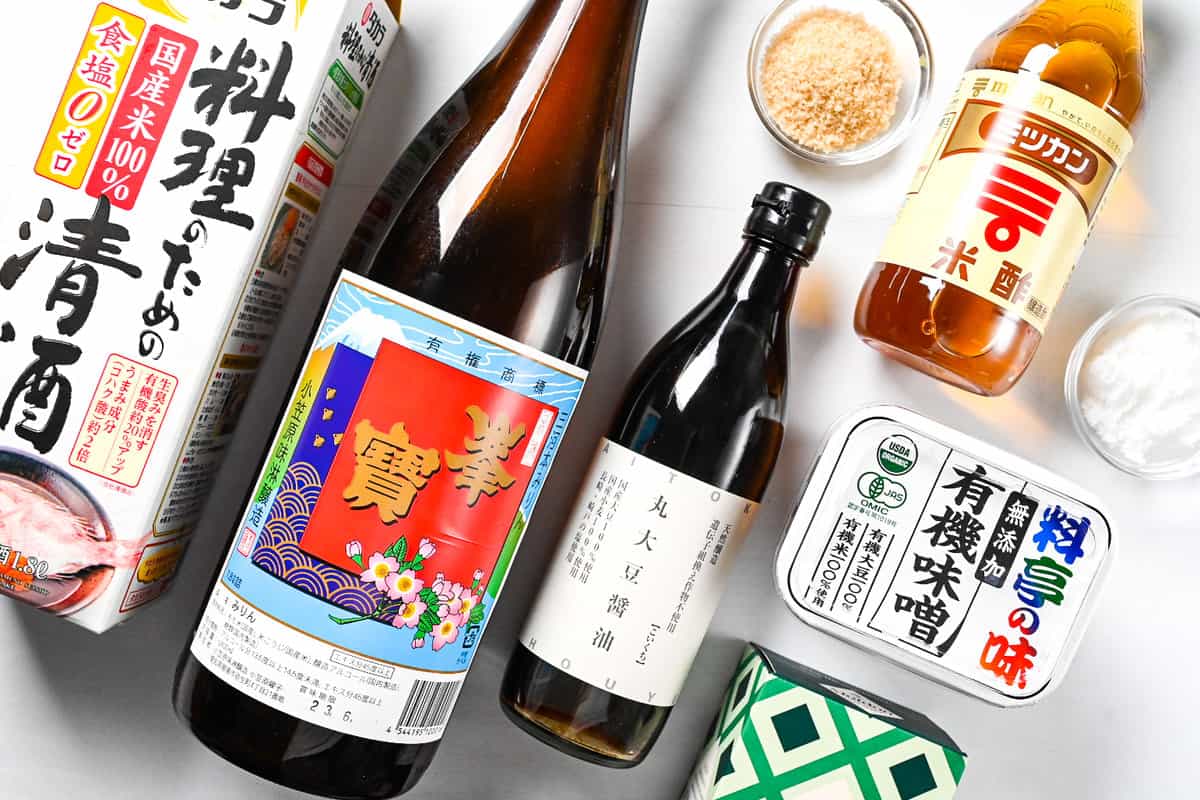
After all these years of cooking Japanese food, I came to one conclusion: “Don’t be stingy with condiments and seasonings.” Top-class condiments may seem very expensive, well I’m not gonna lie, they are. But if you skip a few eatouts and takeouts, they pretty much pay for themselves!
And if you plan to cook Japanese food often and have space, it might even pay to buy some in bulk (I practically have wholesale amounts of soy sauce and mirin in my house!).
Buying top-quality ingredients is more of a running cost, whereas buying condiments is like making an investment that will last you weeks, if not months. If you can, I suggest getting good-quality condiments before expensive ingredients.
To make this post as useful as possible, I will try to include product recommendations for each ingredient and where you can buy them. The links provided here will be from Amazon and mostly cater to people in the US and Japan.
7 ingredients that are 100% essential in Japanese cooking
I would say that no Japanese kitchen is complete without these 7 must-have ingredients. Some are common household items worldwide, but a select few are exclusive to Japanese cooking. The 7 most important ingredients are:
- Sugar
- Salt
- Vinegar (rice vinegar)
- Japanese soy sauce
- Miso paste
- Mirin
- Sake
Without these condiments and seasonings, you basically can’t make Japanese food! Let’s go over them in more detail.
The Rule of “Sa Shi Su Se So”
Anyone who has studied Japanese language might be aware of our phonetic lettering system that combines consonants with the sounds “a i u e o” (あいうえお pronounced “ah ee oo eh oh”). You might wonder, “How is this relevant to cooking?” Well, it is! We use a simple and memorable phrase, “sa shi su se so,” to help us remember the five most important elements in Japanese cooking.

This is a well-known and simple method where each sound represents the five basic ingredients and the order in which they should be added for optimal flavor. In other words, these are the most basic elements in Japanese cooking and are must-haves if you plan to cook Japanese food regularly.
- Sa: Sugar (sato)
- Shi: Salt (shio)
- Su: Vinegar (su)
- Se: Soy sauce (shoyu, a.k.a. seuyu)
- So: Miso
The rule is not just a random combination of acronyms. It is believed that dishes will taste better if the seasonings are added in the order of “sa-shi-su-se-so.” Of course, there are sometimes exceptions, but the general idea here is that you can get the best aroma and flavor by adding soy sauce and miso towards the end so that the flavor isn’t lost during the cooking process!
Now, I will explain the basics of each condiment, recommended products, and where you can buy them.
Sugar (sato)
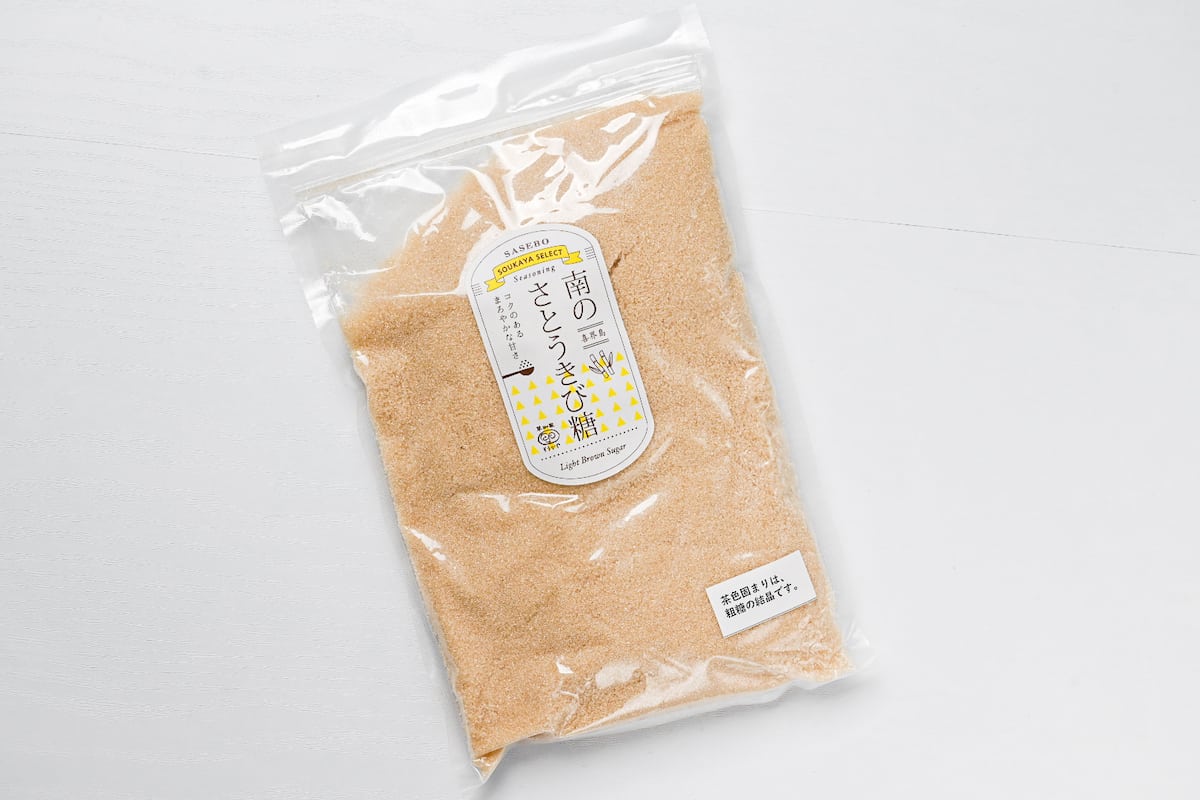
In Japanese cuisine, sugar is used not only to sweeten dishes but also to soften flavors and allow ingredients to really shine. Although many people often use white sugar, which is easy to dissolve, I personally tend to opt for light brown sugar these days. If you want a richer taste, you can use brown sugar, too.
I generally use light brown cane sugar like above. Wholesome organic cane sugar is available here on Amazon US.
Salt (shio)
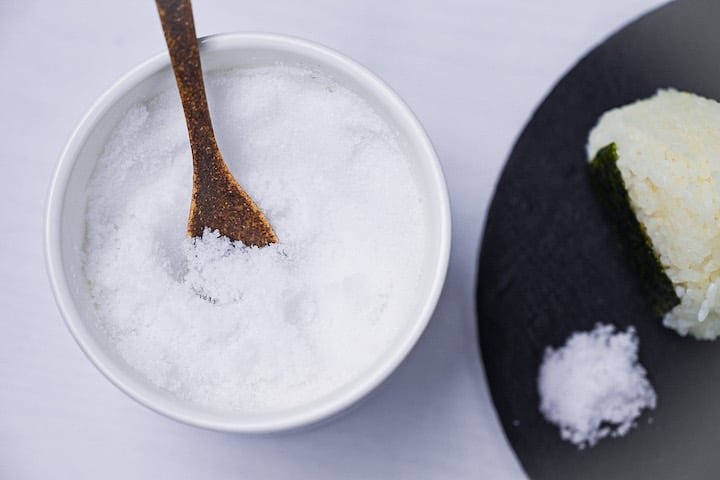
Salt is an essential ingredient for cooking in general as it brings out the flavor of ingredients, slows down spoilage, and has a dehydrating effect, which is especially important in a cuisine that is serious about pickles!
I usually stick to regular sea salt.
Vinegar (su)
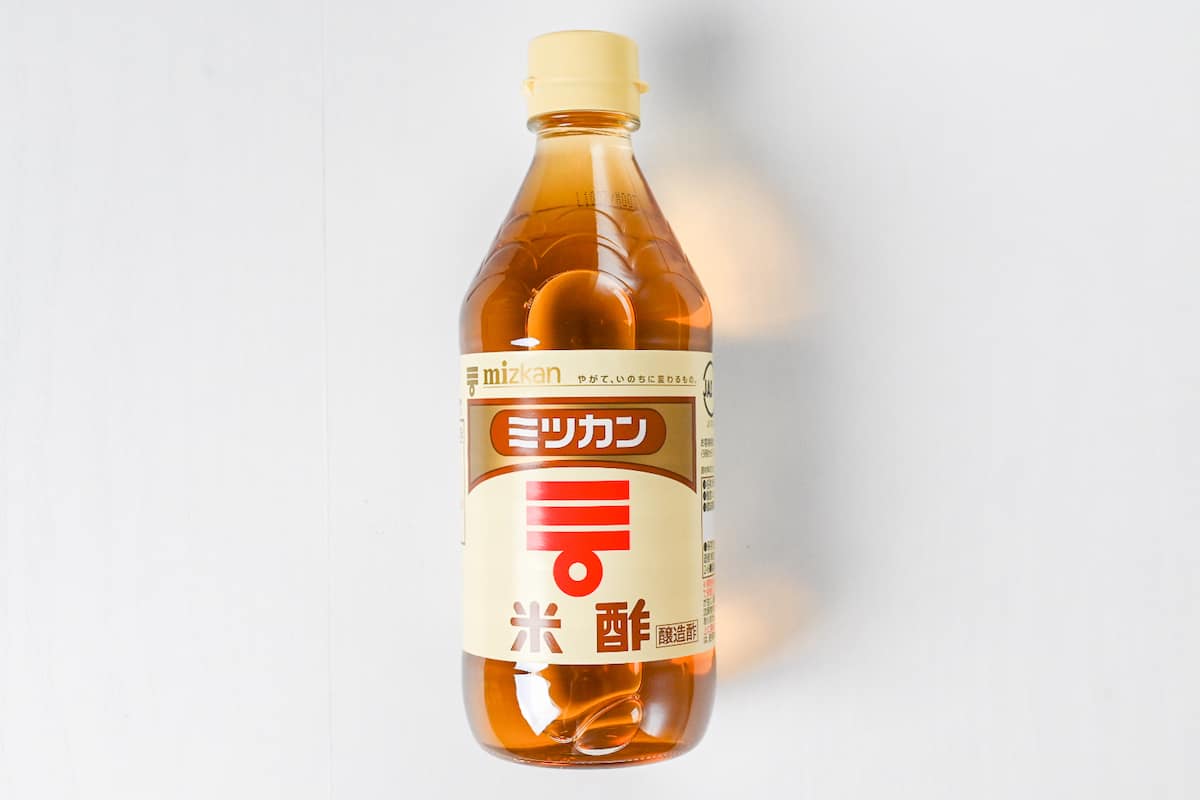
Vinegar softens ingredients and adds a touch of acidity to a dish. In fact, if you feel a dish is lacking somehow, adding a small amount of vinegar can really lift it up!
In Japanese cuisine, rice vinegar or grain vinegar is mostly used. You can use other vinegar, but those are the ones that work the best with Japanese dishes.
In the US, Marukan rice vinegar is a very good option. They’re a trusted and historical company that has operated since 1649 in Japan. In Japan, I currently use Murayama Zosu’s “Chidorisu”. The bottle is so elegant, and the vinegar itself is so good, too!
Dark Soy Sauce (koikuchi shoyu)
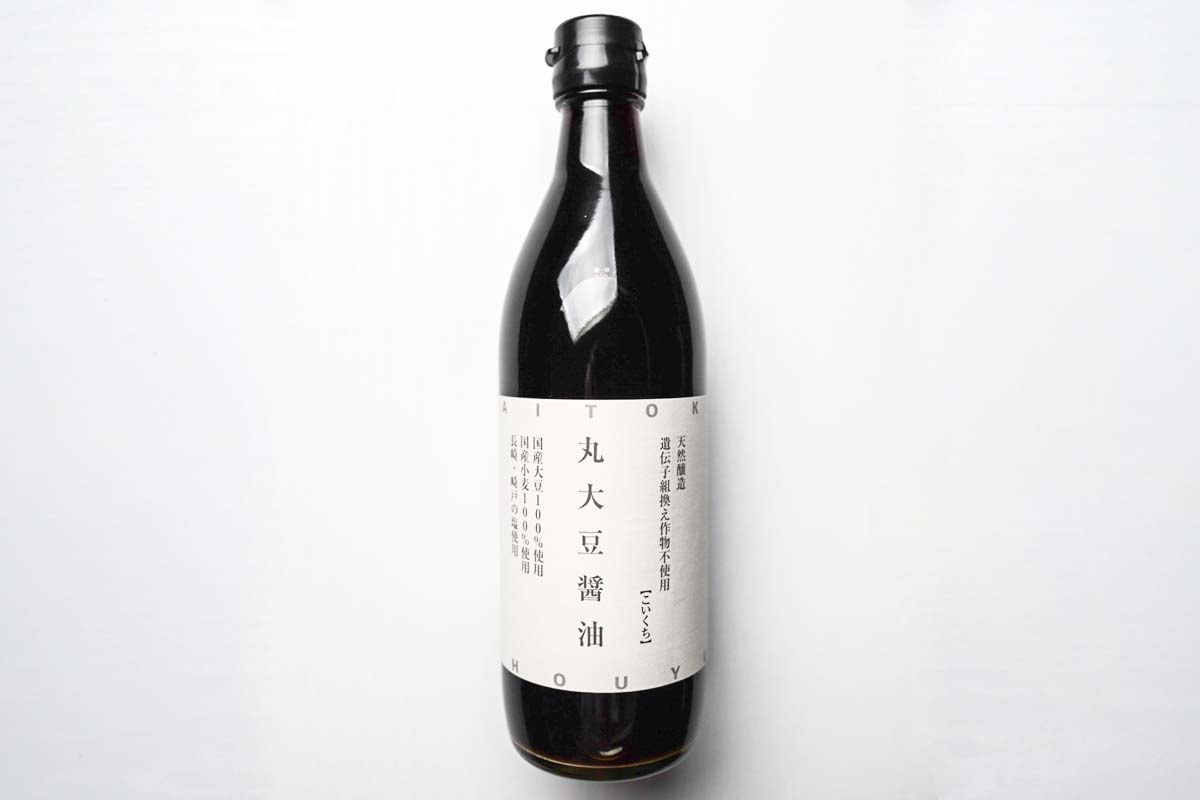
Dark soy sauce is an essential ingredient in Japanese cooking. When I say “soy sauce” in my recipe, I always mean “dark soy sauce” unless otherwise stated. Dark soy sauce is dark in color and rich in aroma. It adds depth of flavor, umami, and a nice color to the dish.
Another common type of soy sauce is “light soy sauce” (usukuchi shoyu); however, they cannot be used interchangeably. Light sauce has a higher salt content.
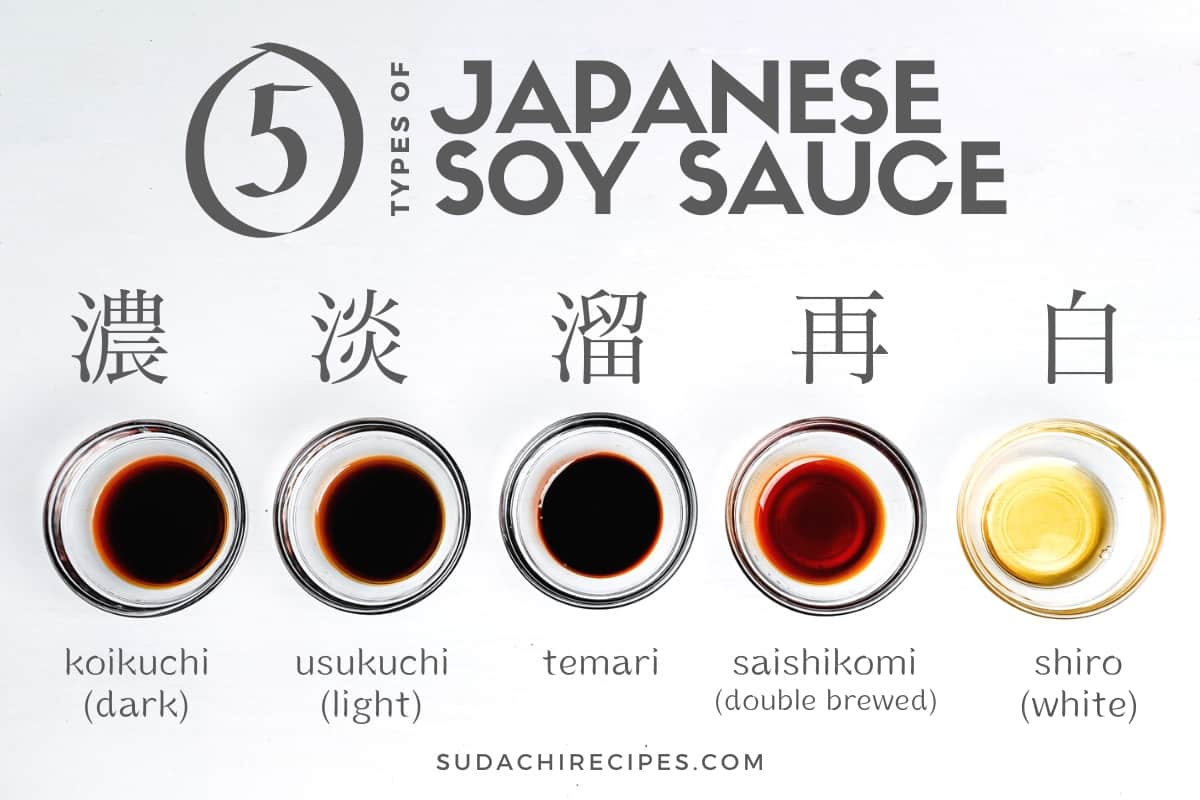
Either way, using Japanese soy sauce for Japanese cuisine is essential. Regardless of where you buy the soy sauce, these are the elements to be considered:
- Organic soy sauce with only soybeans, wheat, and salt as ingredients.
- Using soybeans instead of processed soybeans
- “Honjozo” production method.
In the US, Yamasa’s organic marudaizu soy sauce is definitely a good option to consider. Yamasa is a long-established soy sauce manufacturer founded in 1645.
In Japan, I currently use Daitoku shoyu’s organic soy sauce. I buy in bulk, and it has lasted for a long, long time, even though I literally use soy sauce every day.
If you want more brand recommendations, check out my soy sauce article.
Miso Paste
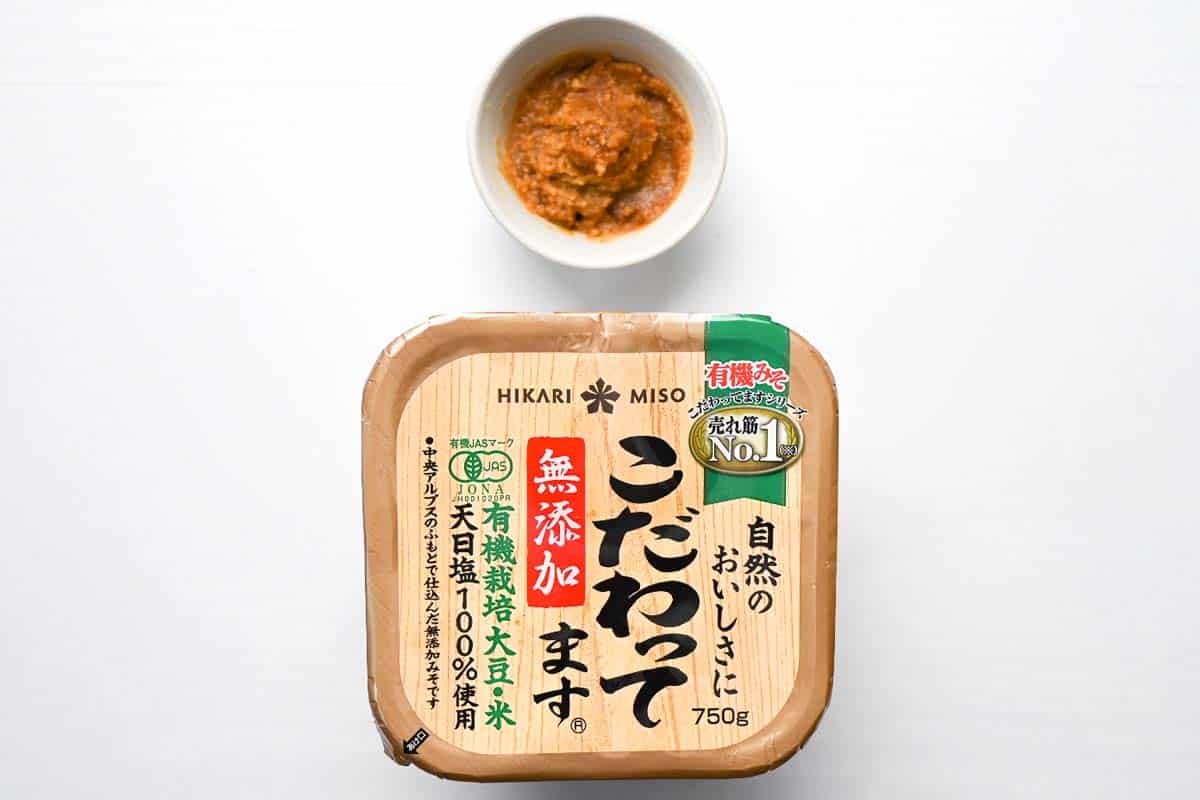
Unlike other ingredients, miso is a bit tricky to pick. This comes in wide varieties, with different tastes and flavors depending on the production method and region of origin. For example, red miso is the most popular option where I’m from, but other types are most used in different areas.
Miso can be categorized by raw materials: rice, barley, and soybean.
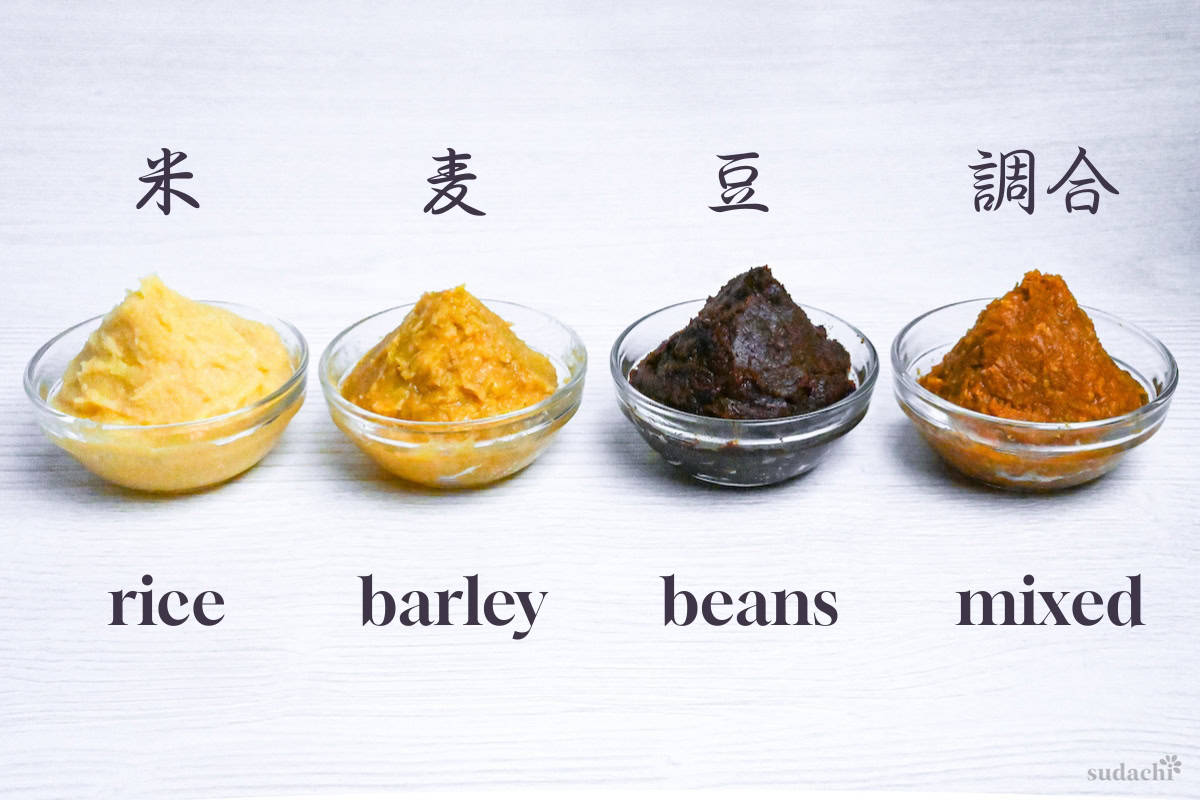
By color, it is easy to get confused: Shiro-miso (white miso), aka-miso (red miso), or awase-miso (yellow miso).
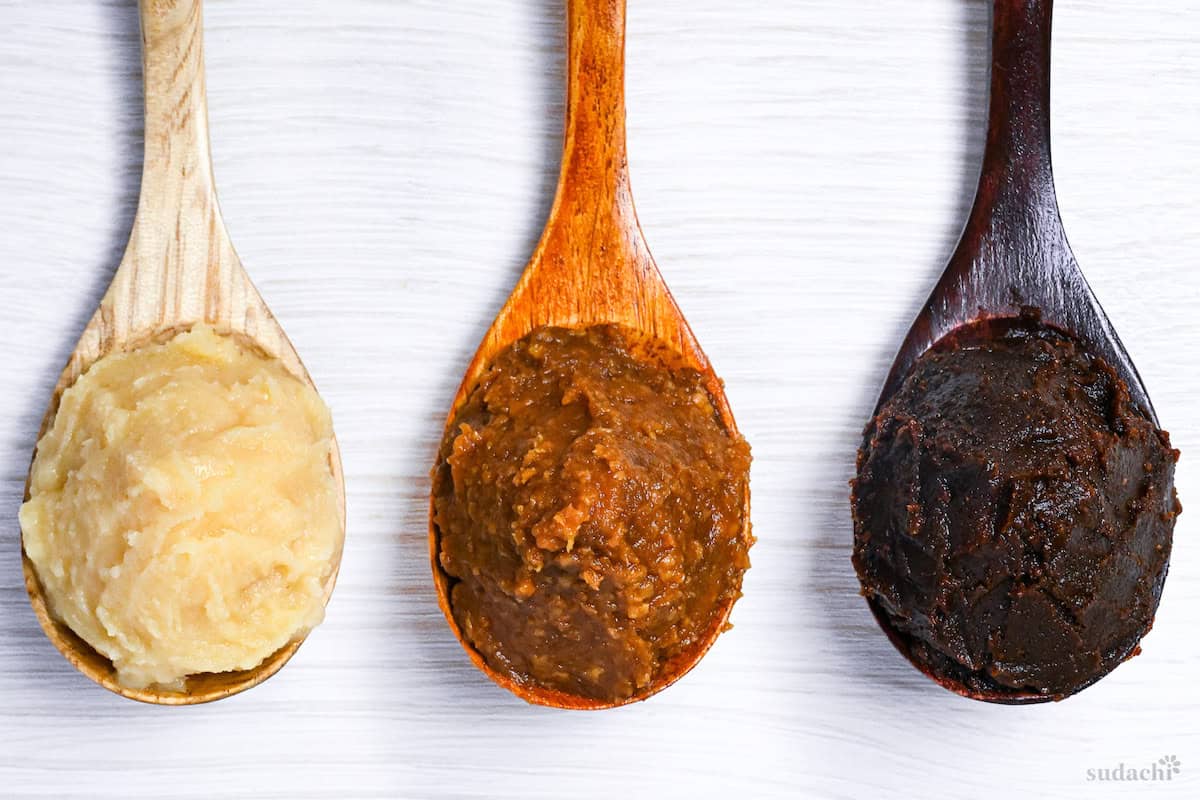
To keep it simple, Awase miso is probably the most generic and easy-to-use miso type. I usually use Awase miso in my recipes unless otherwise stated.
In the US, I recommend Marukome’s miso paste. Founded in 1854, the company is known as one of Japan’s leading miso makers.
It gets more complicated in Japan as I keep a few types of miso in my pantry. I currently use Marukome’s koji bijin for general use, organic haccho miso for red miso, and Kyo no irodori saikyo shiro miso for white miso.
Mirin
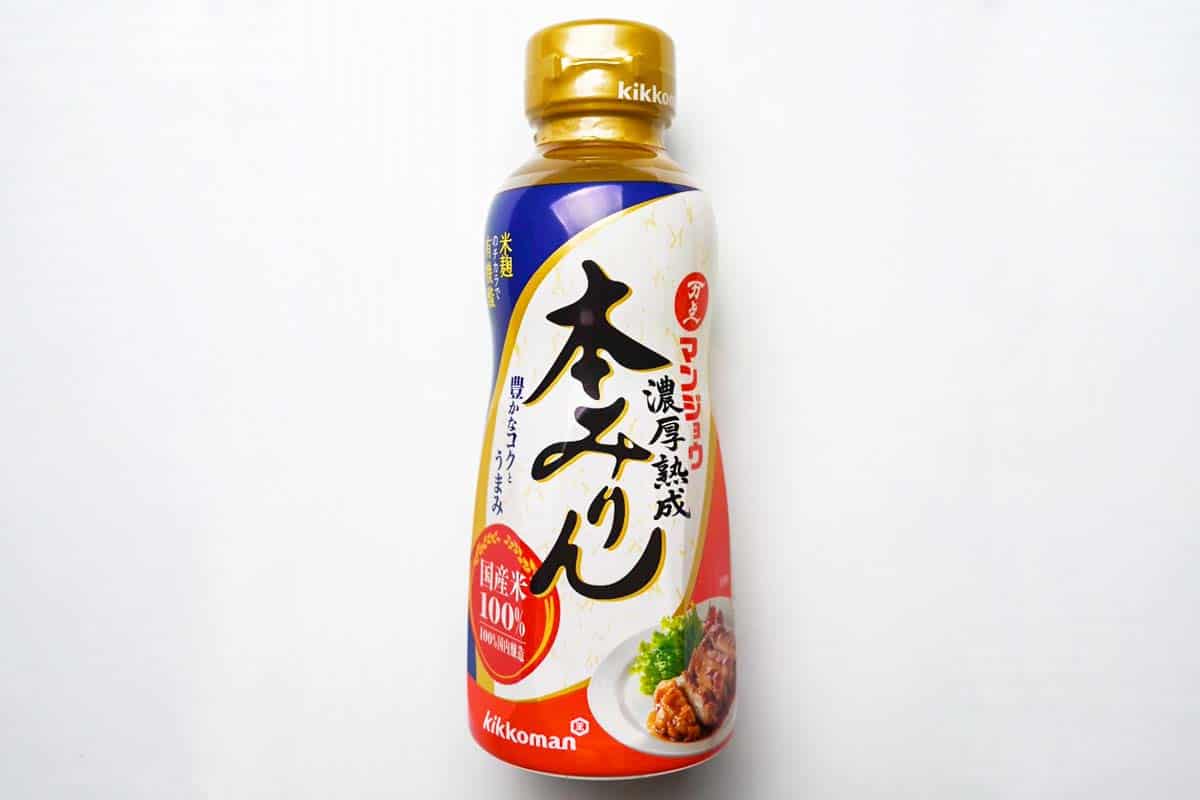
Mirin is a liquor seasoning with a mild and gentle sweetness made from glutinous rice, which is often translated as sweet cooking sake. It is an indispensable condiment for Japanese cuisine, adding a hint of sweetness and a more authentic Japanese flavor to dishes.
Choosing the right mirin is very important and tricky at times because there are a lot of “mirin-style condiments (みりん風調味料)” that are actually not real mirin. When you buy mirin, please look for hon mirin (本みりん), which is literally “real mirin.”
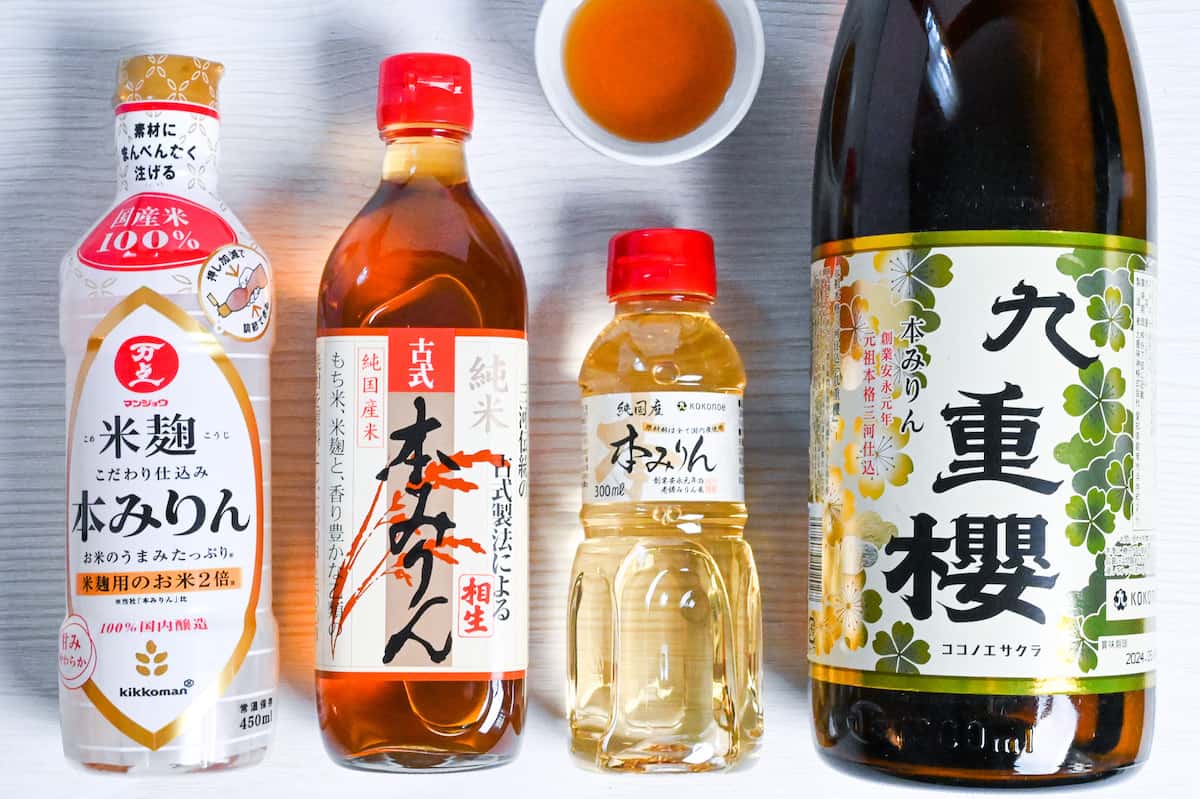
But, mirin-style condiment is a cheaper option and a great substitute if you’re on a budget.
In the US, for a high-quality, affordable Hon Mirin, I recommend Hinode Hon Mirin. Hinode is a well-known manufacturer of seasonings, mainly mirin and brewed vinegar. If you’re looking for premium quality, Kokonoe Jun Mikawa Hon Mirin is also available on Amazon US.
If you’re looking for something a bit easier on the wallet and don’t mind that it’s not real hon mirin, Kikkoman’s Manjo Aji Mirin would be a great option for you.
In Japan, I currently use Ogasawara Mirin Jozo’s Mikawa Mirin “Minetakara”.
Sake
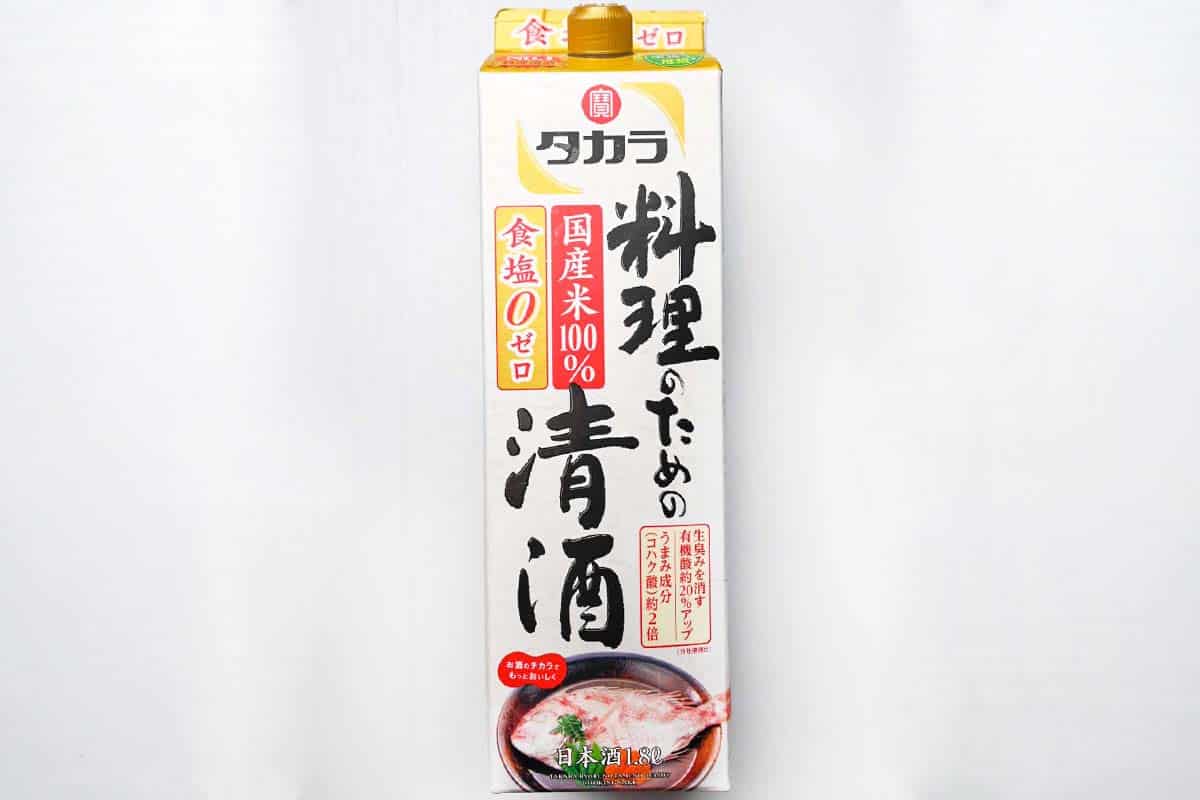
Sake (Japanese rice wine) is not only for drinking but is also an extremely important condiment for Japanese cooking. It does make a big difference if sake is absent. It is effective in enhancing umami and removing meat/fish odors.
However, choosing the right sake for cooking can be very challenging. The most suitable one is any drinking-grade junmai (pure rice sake). On the other hand, daiginjo and any kind of cloudy sake or sake containing additional fruits would not be suitable.
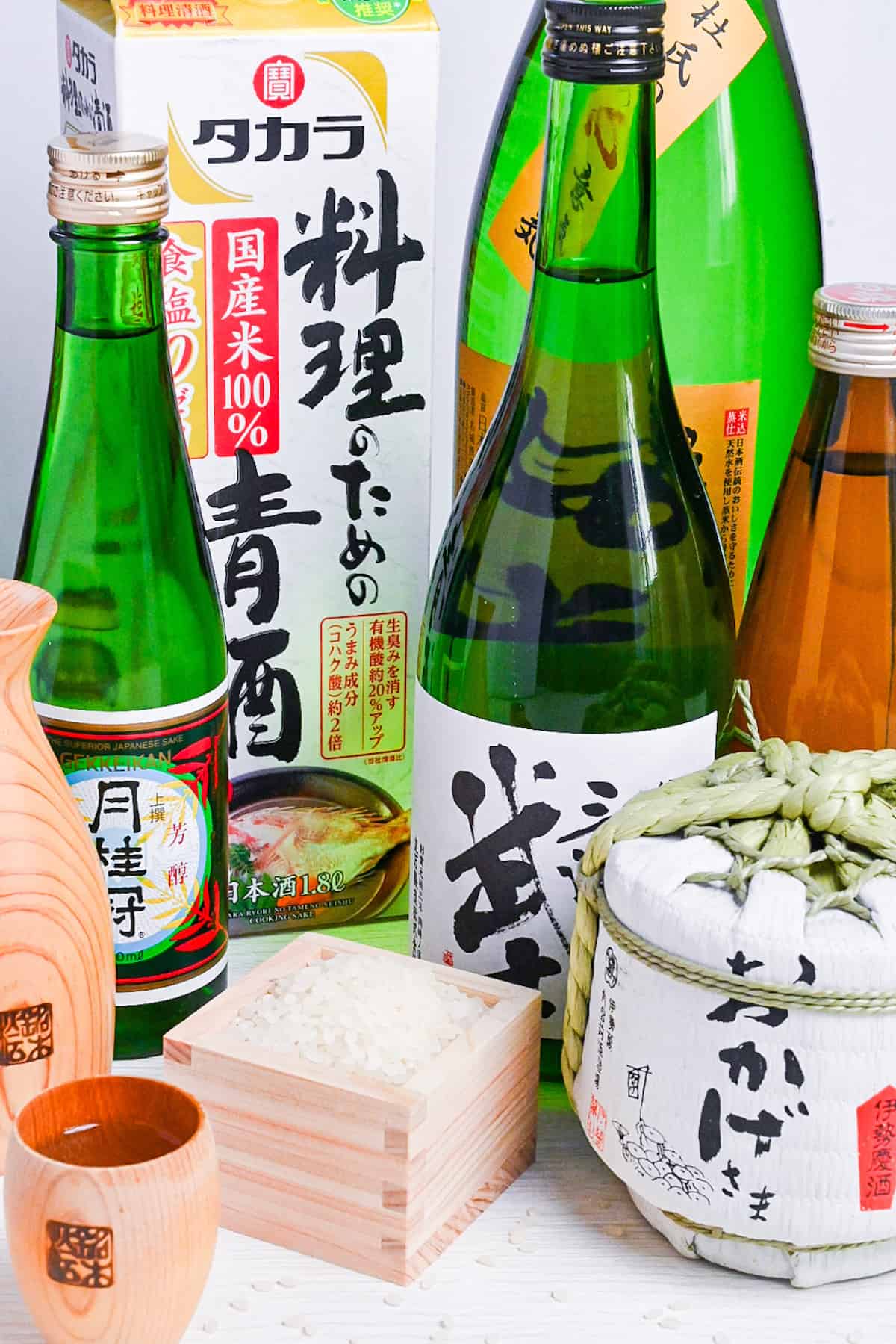
The ironic trap is that some of the products marked as “cooking sake” are not always the best option for cooking because they contain added salt and can mess up the salt balance when following a recipe.
These cooking sakes are cheaper because they’re made with salt and other additives, so they’re not taxed as alcohol. If you buy cooking sake with added salt, just make sure to adjust the salt or soy sauce content in the recipe to avoid making it too salty.
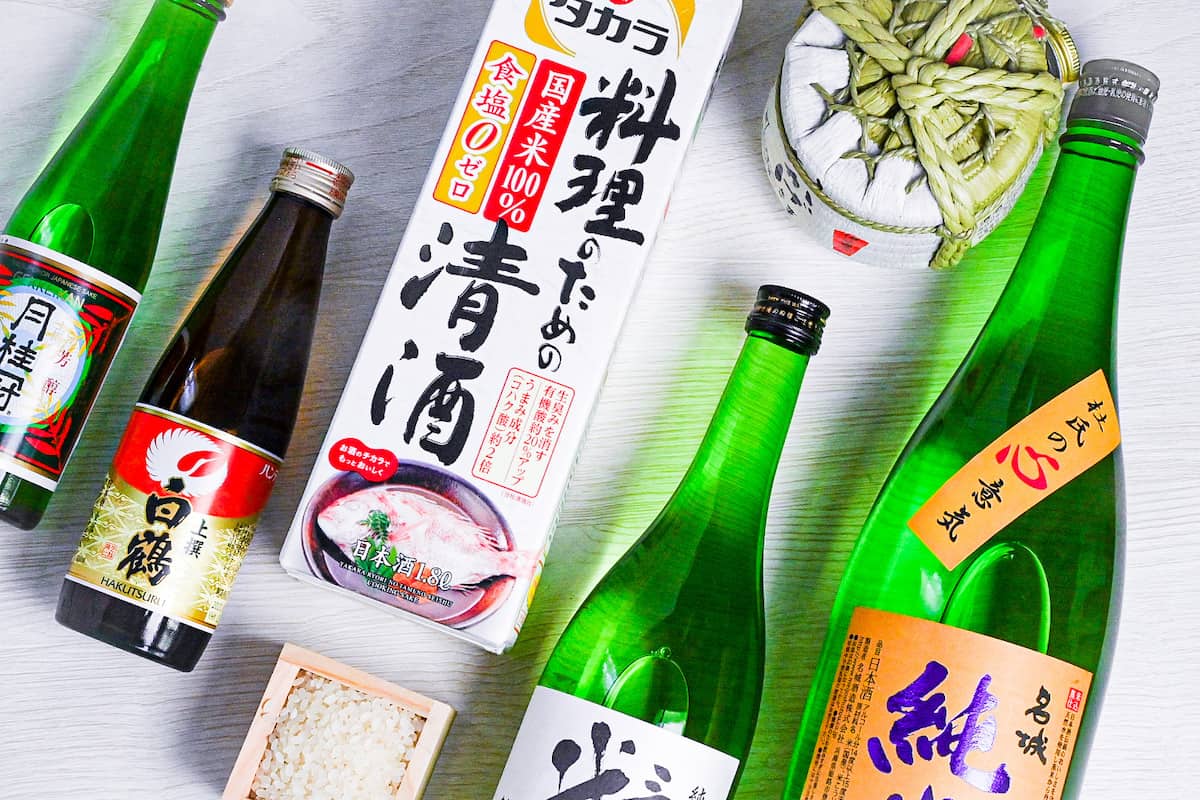
Even one of the cheapest “Gekkeikan” (one of the brands in the picture above) is way better than using salted cooking sake.
When I mention sake in my recipe, I mean sake without any salt content.
Mayonnaise
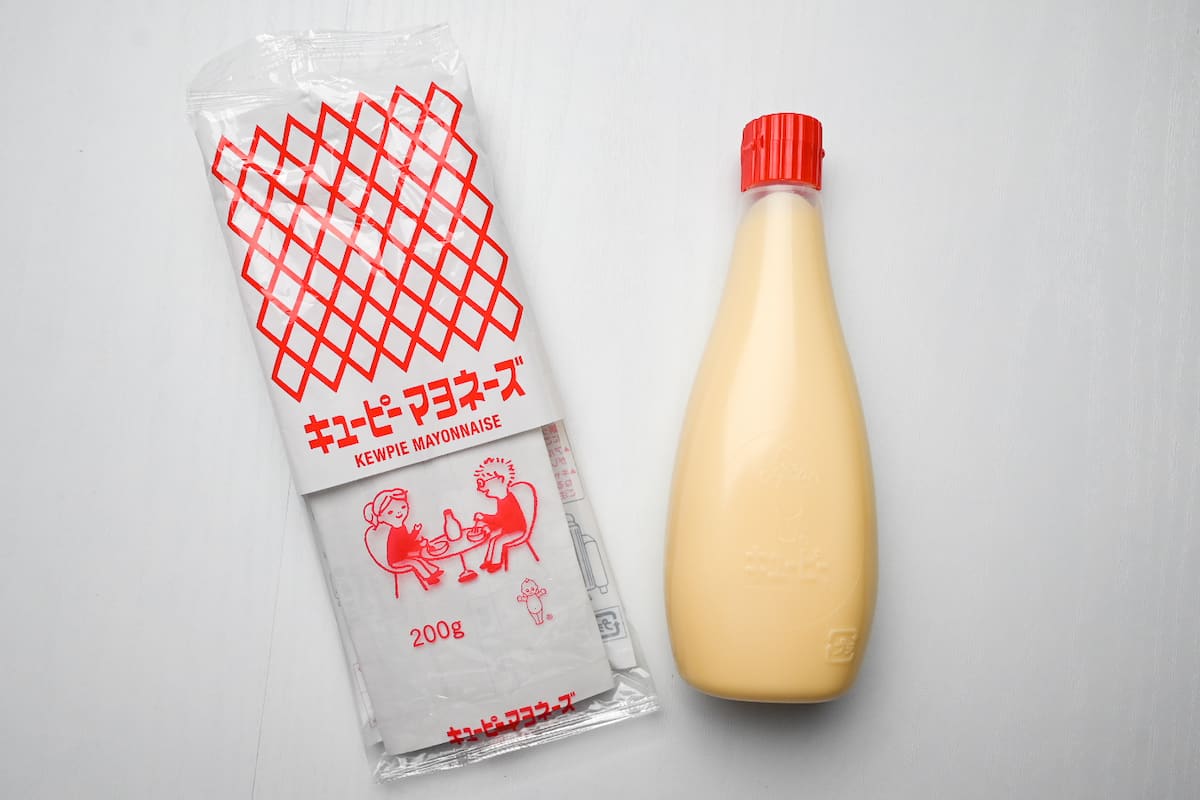
Even though mayonnaise is available in every country, Japanese mayonnaise works best with Japanese cooking. One notable difference is that Japanese mayonnaise is not as sour.
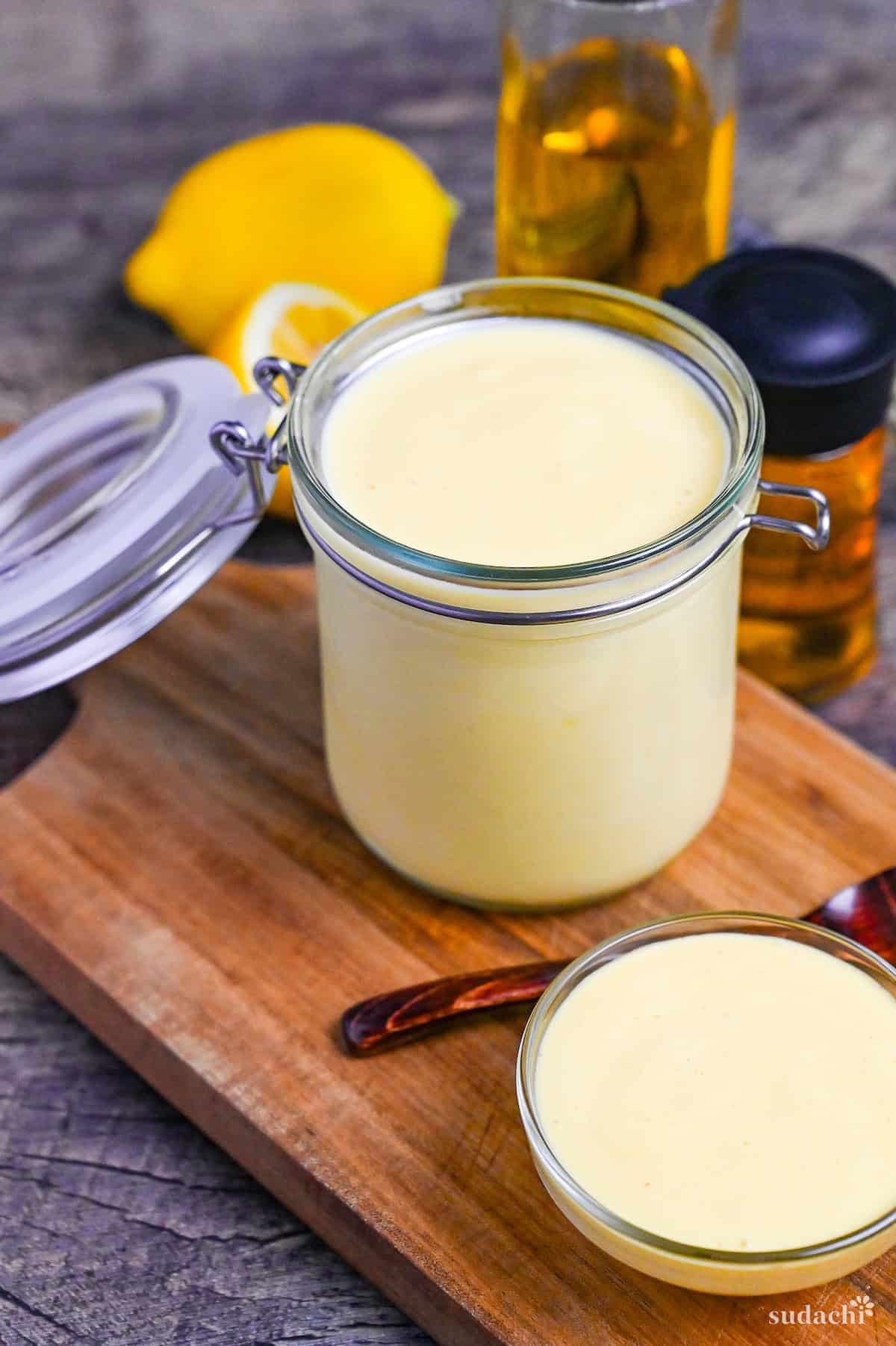
Tsuyu Sauce
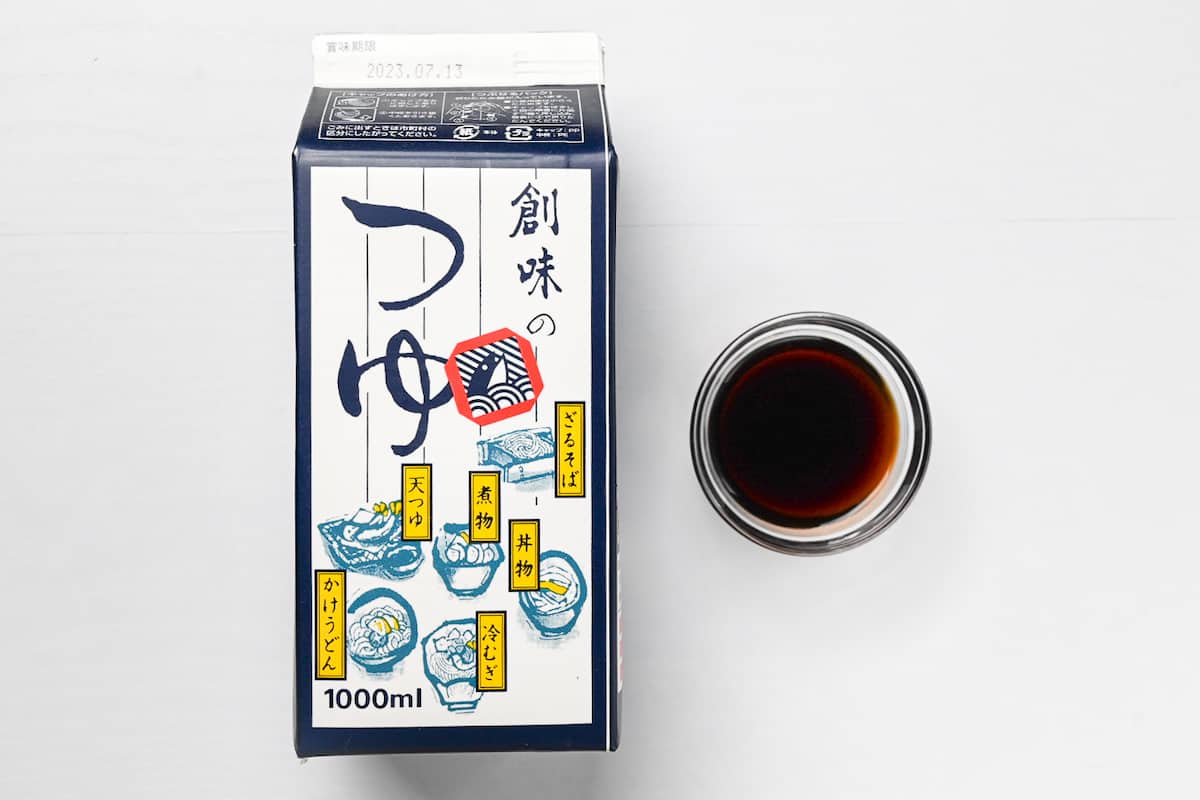
Tsuyu sauce is a condiment based on dashi (Japanese soup stock), soy sauce, mirin (or sake), and sugar. Originally, it was designed to be used with noodles such as somen, soba, and udon.
In recent years, more and more people have begun to treat it not only as a sauce for noodles but also as a replacement for soy sauce and use it in a variety of dishes.
Even though I have a recipe for homemade tsuyu sauce, I tend to keep one shop-bought in my pantry because I often use it in small amounts. When I say tsuyu sauce in my recipe, I mean the concentrated type, not the diluted type.
In the US, I recommend good old Kikkoman’s hontsuyu!
In Japan, I currently use Soumi no tsuyu.
Chicken Stock (bouillon) Powder
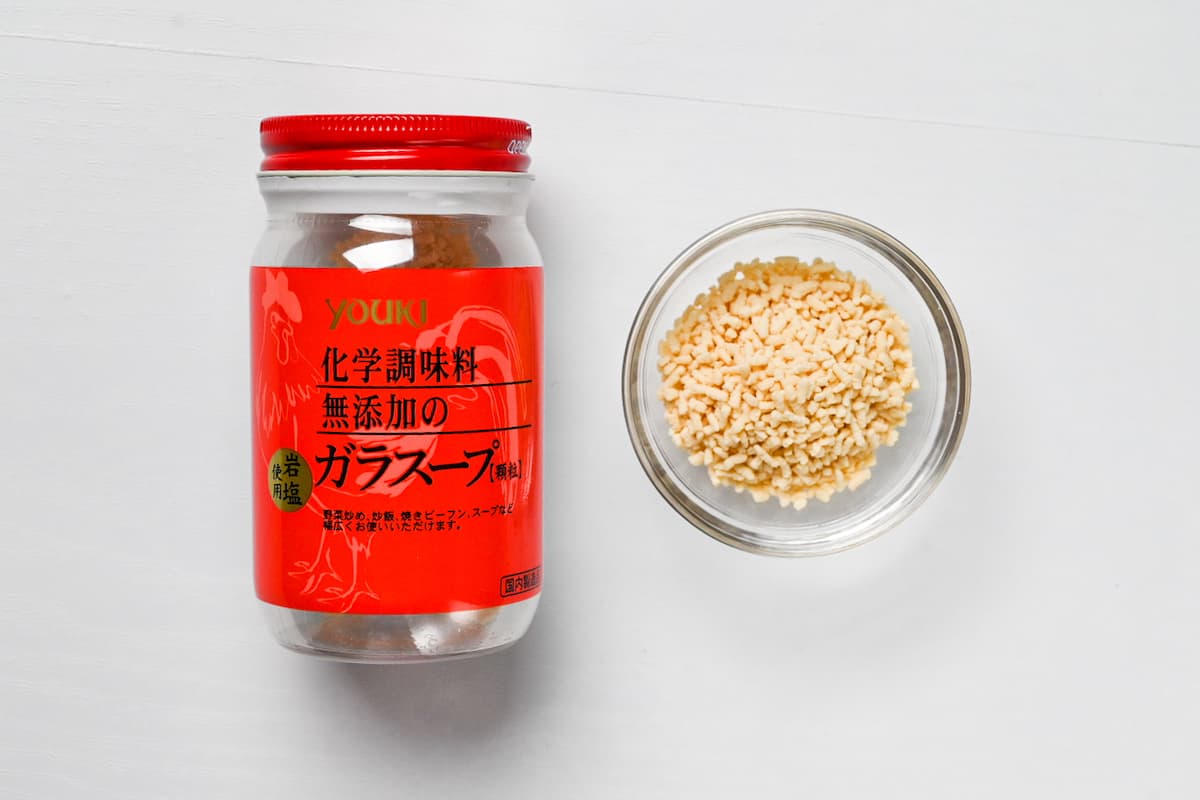
You might be surprised at how many of my recipes use “Chinese-style chicken bouillon powder,” but I consider this an essential item to have in your pantry. It has a light but deep flavor and can be used in lots of different ways for Chuka (Japanese-style Chinese dishes) and Japanese cuisine.
You can substitute it with chicken bouillon powder or other bouillon powder that contains salt. But don’t use concentrated stock cubes, as they might alter the salt content.
I always use Youki’s chicken bouillon powder (Amazon US).
Sesame Oil
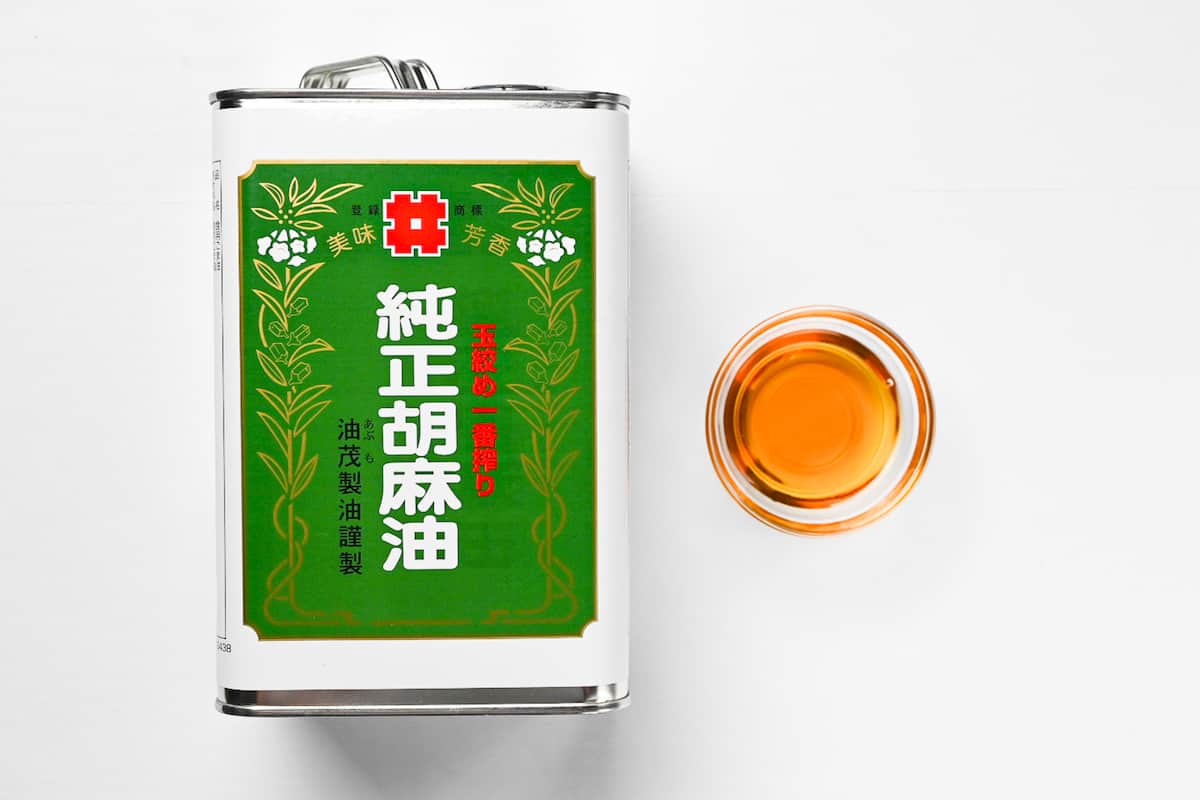
Sesame oil, an essential part of Asian cuisines, is made from white sesame seeds that have been roasted and pressed for their oil content. Japan is no exception, and this oil is always stored at home.
Sesame oil is so versatile that it can be used for frying or raw, so be sure to keep a bottle in your pantry.
In the US, I recommend Kadoya’s sesame oil. In Japan, I currently use Abumo seiyu’s sesame oil.
Dashi
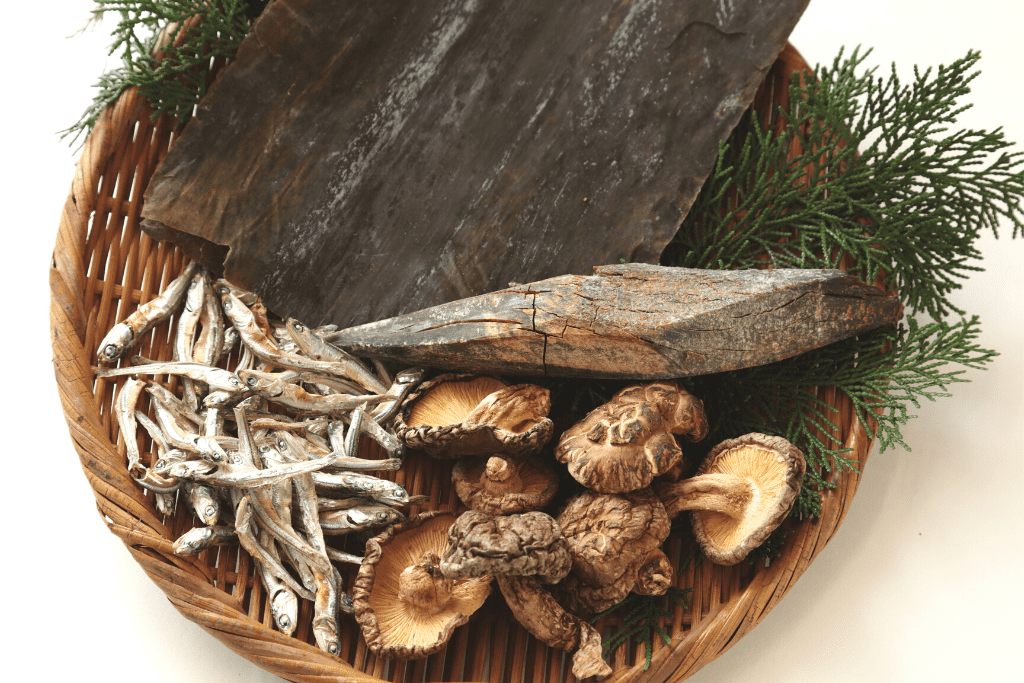
Dashi is the broth made by boiling ingredients such as kombu (kelp) and dried bonito flakes, and it is an absolutely essential part of Japanese cuisine. If you want to make a homemade one, I have a few dashi recipes, so please check out from below:
- My favourite awase dashi recipe
- Simple Japanese awase dashi stock with kelp and bonito flakes
- Shiitake and kombu awase dashi (vegan)
However, you don’t always have time to make homemade dashi stock; in such situations, I resort to teabag-style dashi packets or dashi granules (if I need a small quantity).
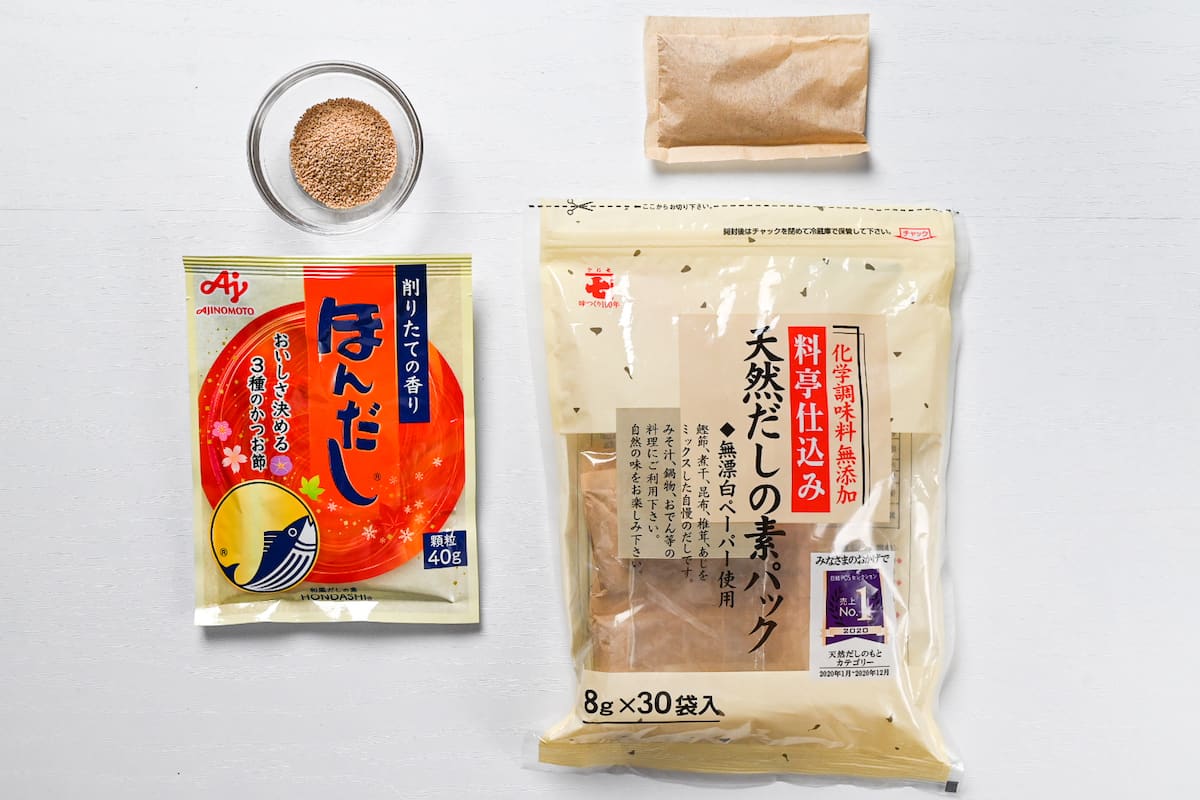
I personally much prefer dashi packets instead of granules.
The dashi packets by Kuzu Fuku and Sons are my all-time favorite, even in Japan. I was surprised at how good they are—almost as good as homemade dashi! Luckily, you can find them here on Amazon US.
Ajinomoto’s hondashi is a great option if you want dashi granules.
Wasabi
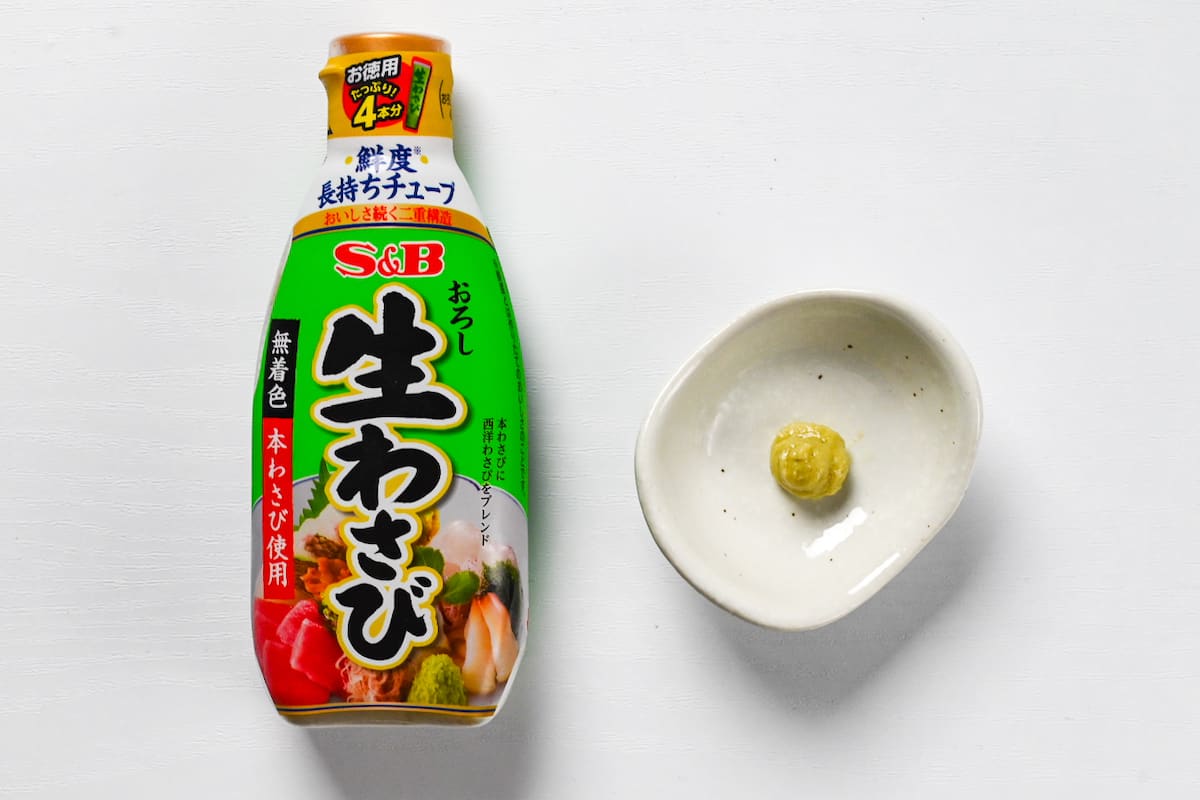
Wasabi is a cruciferous plant native to Japan that grows in clear streams deep in the mountains.
The wasabi plant is part of the same family as horseradish, and it’s often called “Japanese horseradish.” It’s green in color and has a strong yet fresh and aromatic taste. It’s an essential ingredient in sashimi and sushi.
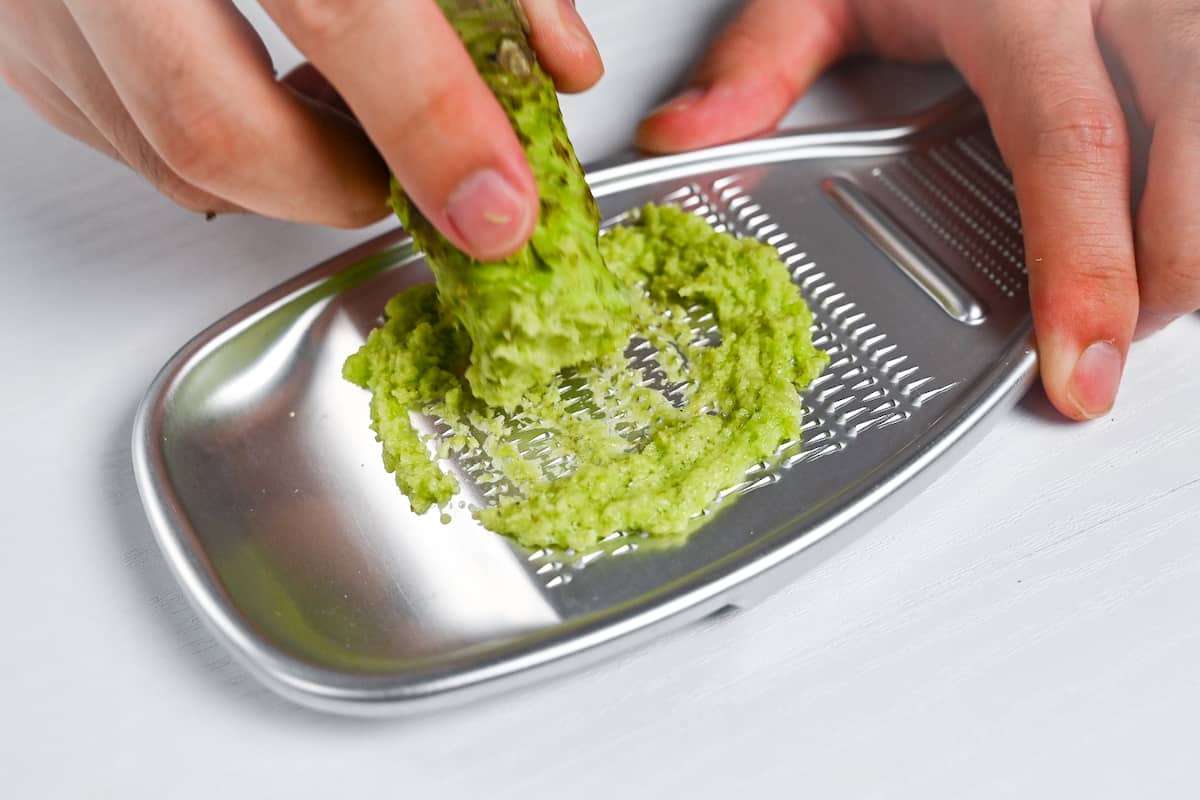
If you want to know how to grate fresh wasabi root, please check out this how-to post! But we often use wasabi paste in a tube for an easier and inexpensive solution. One thing to note is to make sure to buy a wasabi tube that states “hon wasabi (本わさび)”; if not, the product is likely to be made by regular horse radish, not wasabi.
The best wasabi paste in a tube available on Amazon US is Tamaruya’s Authentic Wasabi from Shizuoka. This is basically the closest you can get to freshly grated wasabi from a tube. S&B brand wasabi is not always “hon wasabi”, but it’s a popular option in Japan.
Japanese Mustard (Karashi)
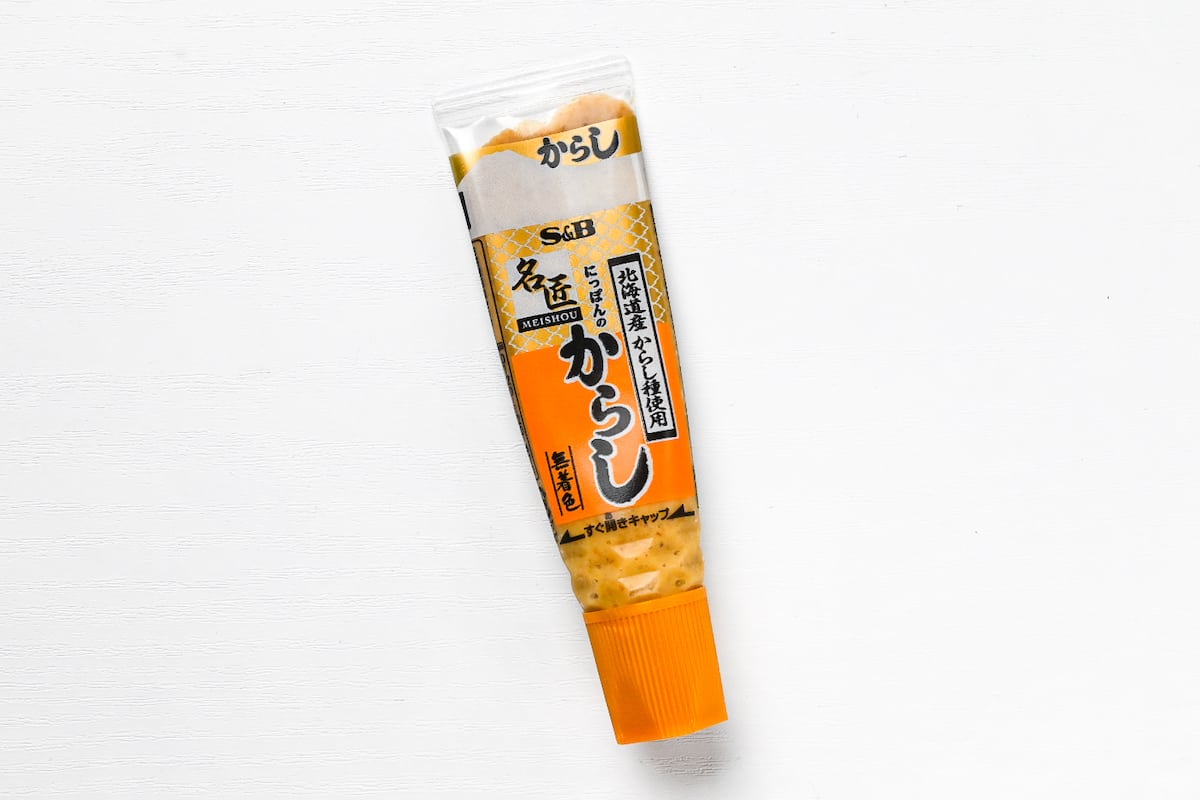
You might wonder about the differences between Japanese mustard (a.k.a karashi) and others. Genuine Japanese mustard is made primarily from “oriental mustard” and is designed to deliver a distinctive mustard flavor and strong pungency. However, some products may blend “oriental mustard” and “yellow mustard.”
Same as wasabi, choosing S&B karashi is usually the safest option! (Available on Amazon US.)
Tobanajan
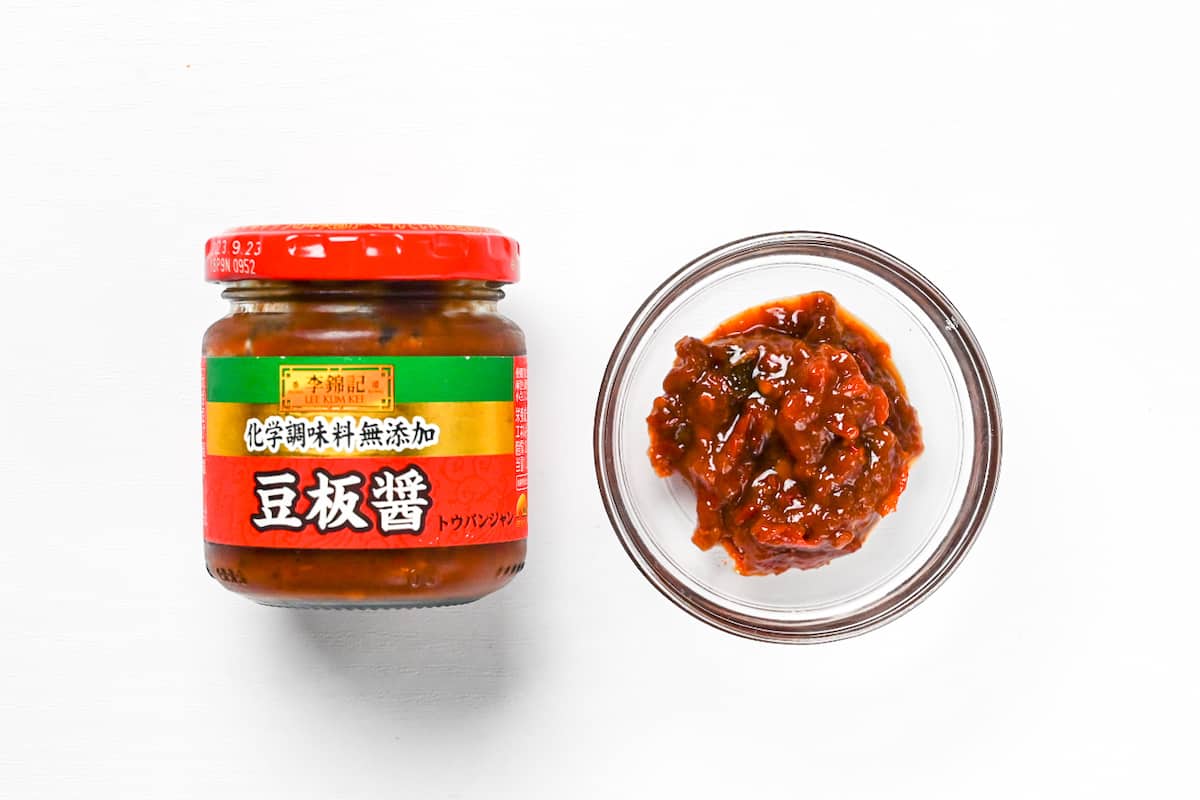
Doubanjiang (tobanjan) is a red pepper paste from the Sichuan region of China. It is made by fermenting fava beans with salt, red pepper, and malt. You might be surprised to see it on a Japanese condiments list, but it is also very commonly used in Japanese home cooking.
For example, it is an indispensable seasoning for “Chuka ryori” (Chinese-Japanese fusion dishes) such as mabo dofu and ebi chili.
I currently and have always been using Lee Kum Kee’s Tobanjan. The same product is also available on Amazon US.
Curry Powder
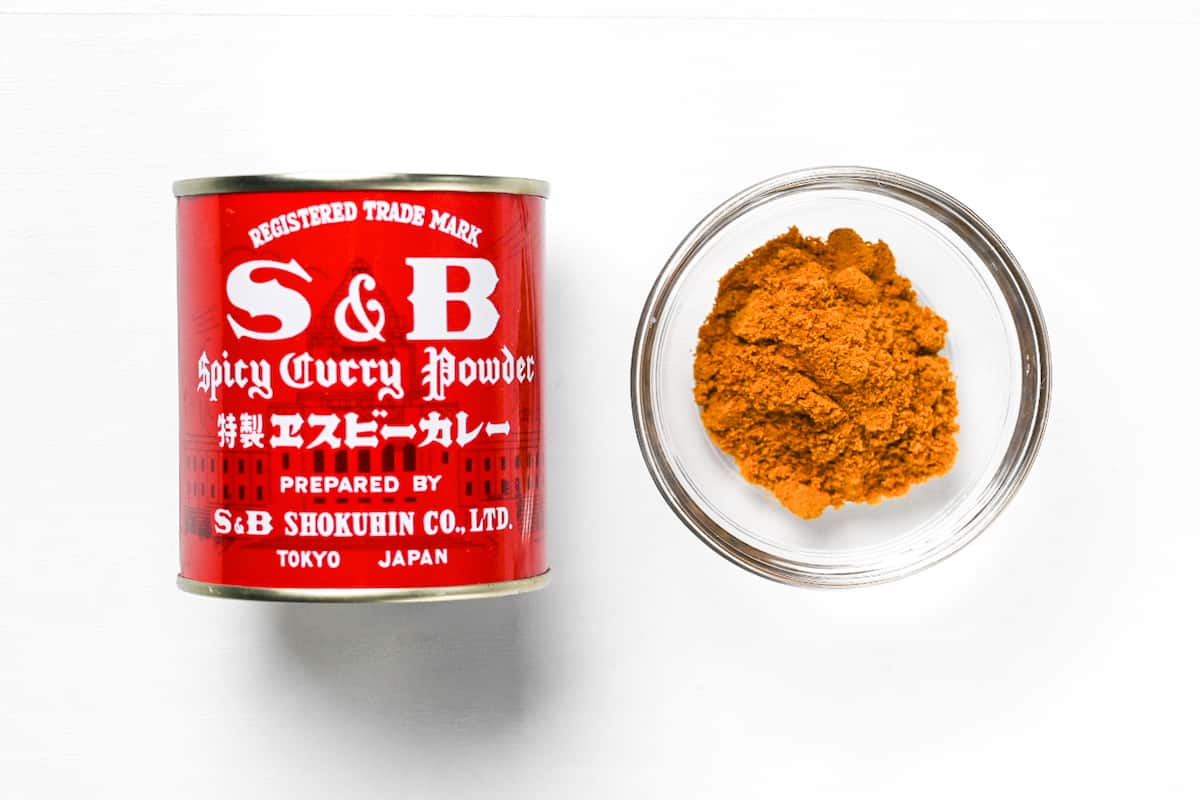
Curry powder is a mixed spice used in curry-flavored dishes. In India, people make their own homemade blends of various spices, but in Japan, ready-made mixed spices are used.
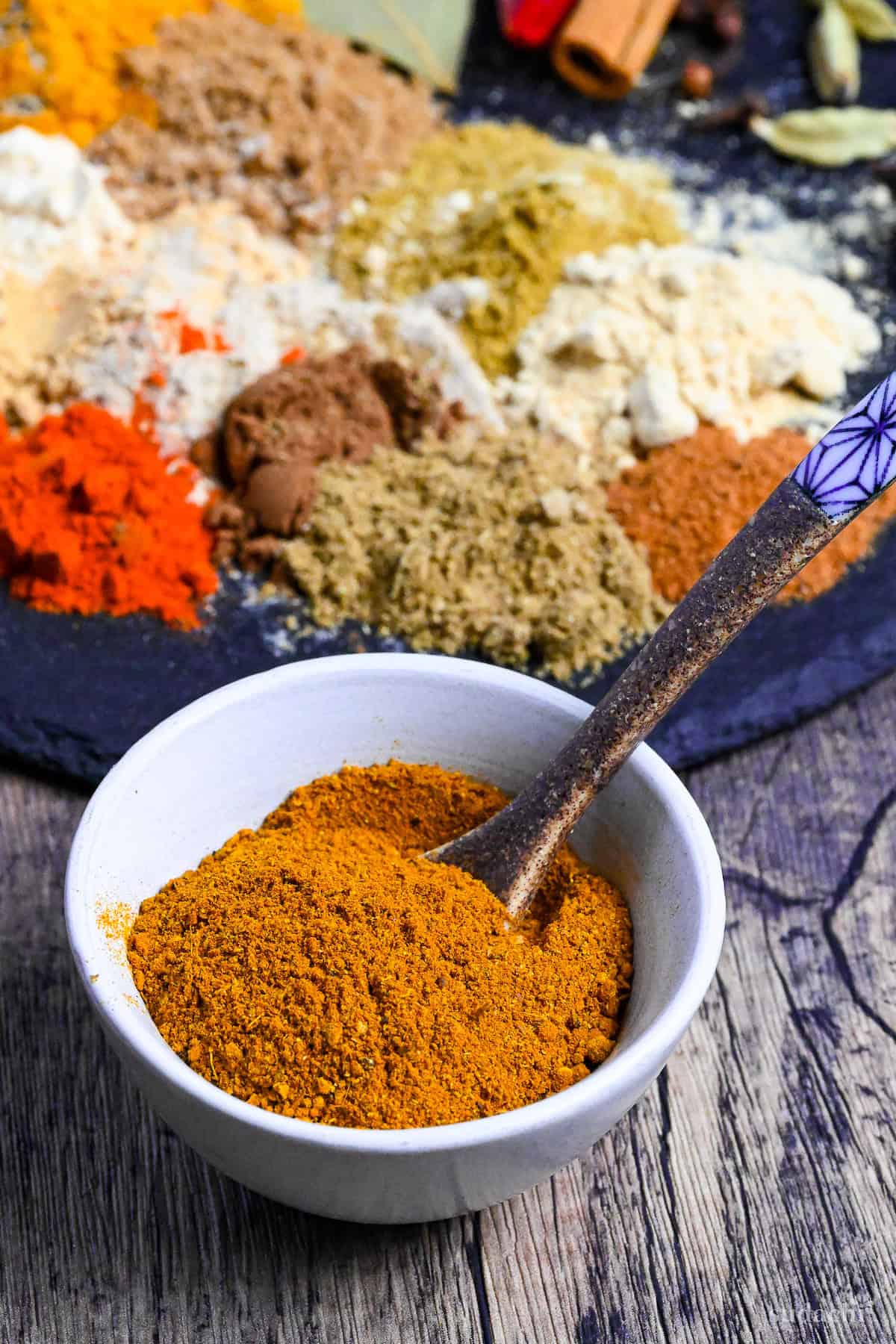
For store-bought options, there is only one curry powder product I want to recommend, which is made by S&B again. It’s available at Amazon US and Amazon JP.
Shichimi Togarashi
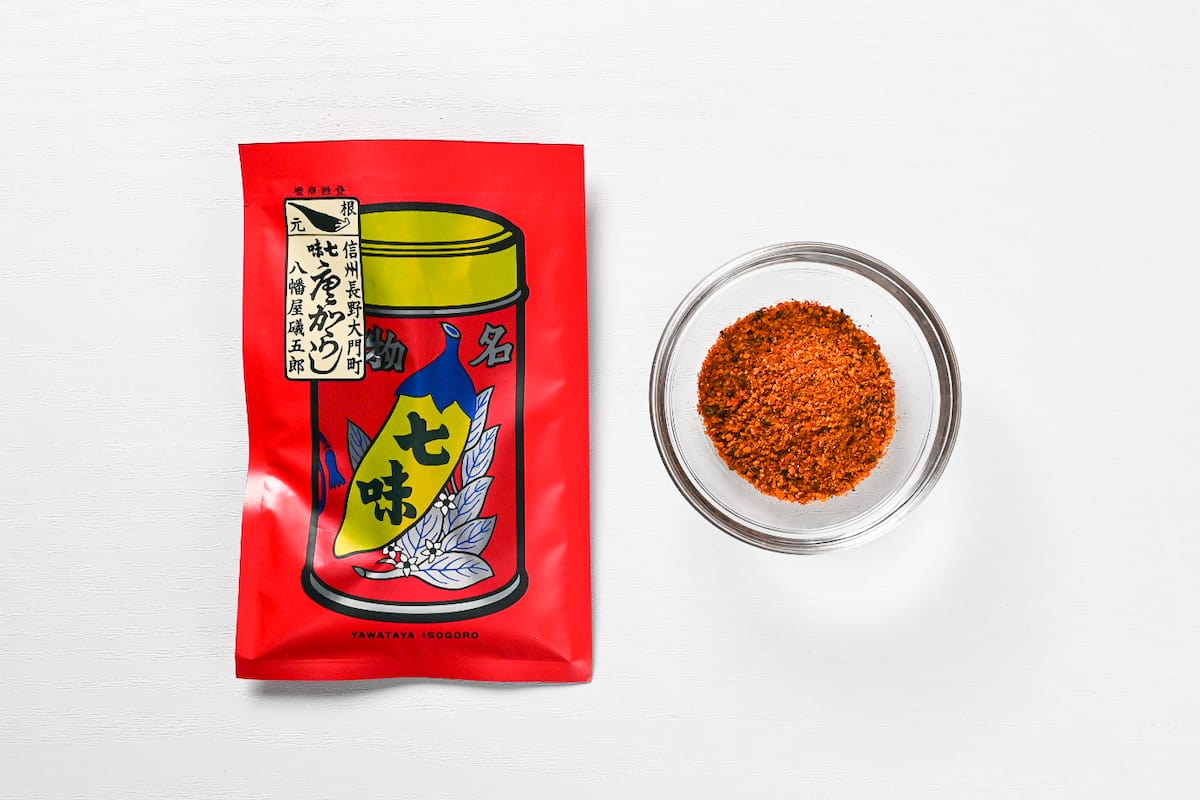
Shichimi (seven-spice mix) is a uniquely Japanese mixture of spices, mainly chili peppers. It is excellent for use in all kinds of dishes, including sprinkling over udon and soba noodles.
Yet again, I recommend S&B shichimi togarashi, which is available at Amazon US and Amazon JP.
Light soy sauce (Usukuchi Shoyu)
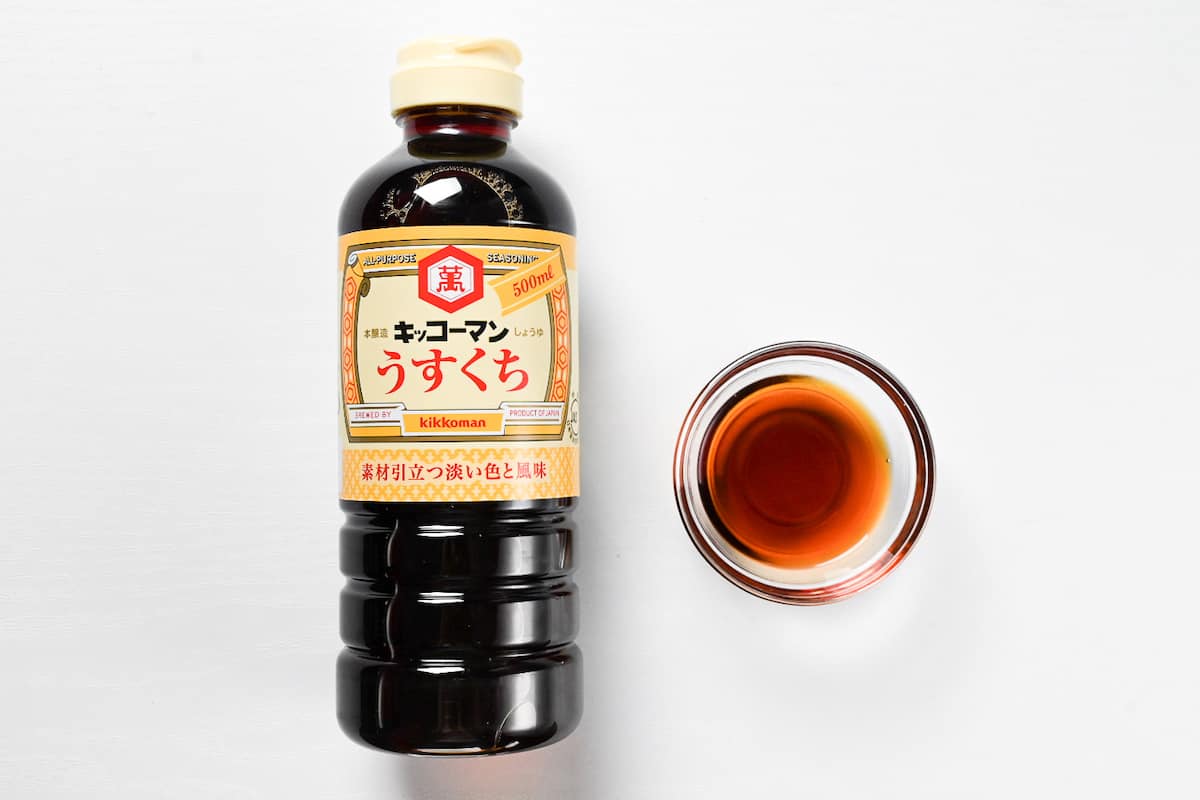
Unlike the essential dark soy sauce, I rarely use light soy sauce. Light soy sauce is a lightly colored, mildly aromatic, strongly salted soy sauce originating from the Kansai region. It is suited for dishes that take full advantage of the color and flavor of the ingredients and can be used to create an elegant taste.
Although the word “light” might sound like it is low in salt, it is actually the opposite. So be careful not to use it in the same way as dark soy sauce, as it can be extremely salty. It’s often used for soup, so the color of the soup will be lighter, or for dishes where you want to maintain a light color, such as dashimaki tamago.
I would say the importance of having light soy sauce in your pantry is not that high. However, if you’re interested, I recommend Kikkoman’s usukuchi soy sauce, which is available on Amazon US.
Ginger Paste
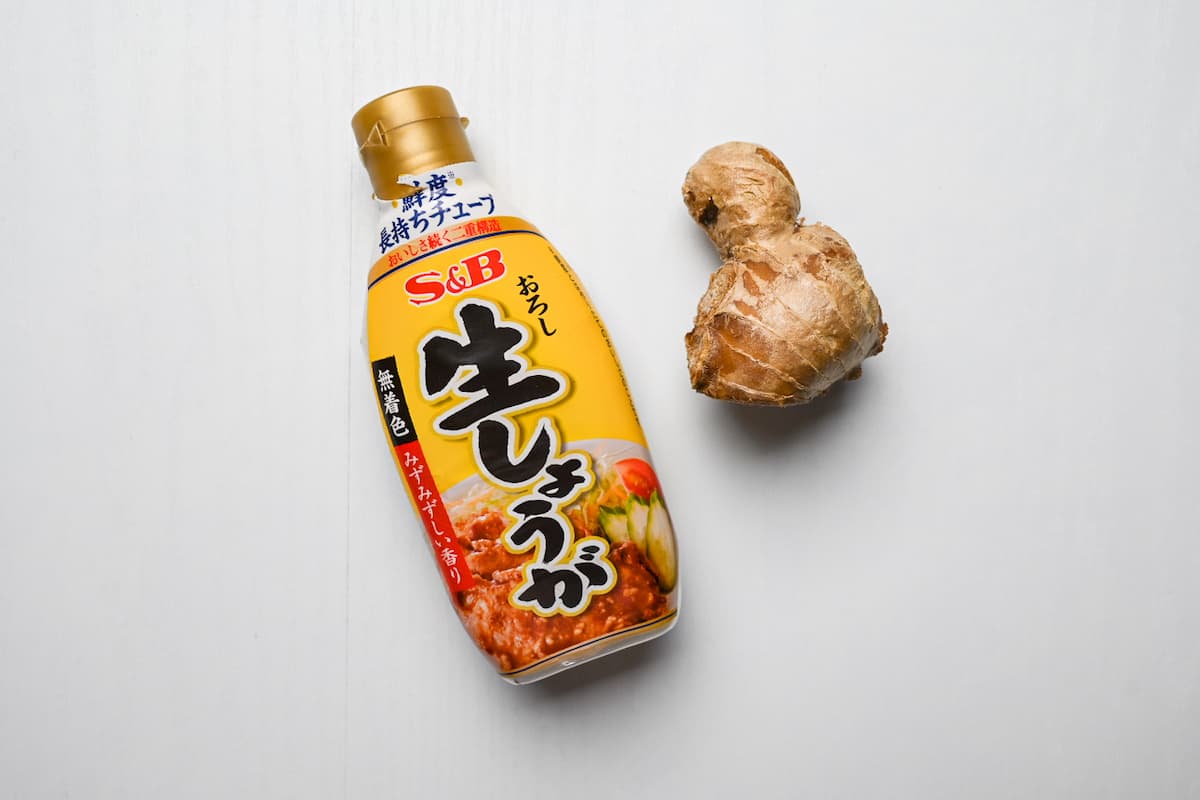
Ginger is often used in dishes to soften meaty or fishy odors and adds a light, fragrant taste that stimulates the appetite. While it’s fine to grate fresh ginger into a paste, it’s common to find tubes of ready-to-use ginger paste in Japanese homes. While I wouldn’t say it’s an essential ingredient, it’s so convenient and has a long shelf life, so I had to recommend it!
I use S&B Oroshi Shoga (grated ginger), which you can buy on Amazon US here.
Garlic Paste
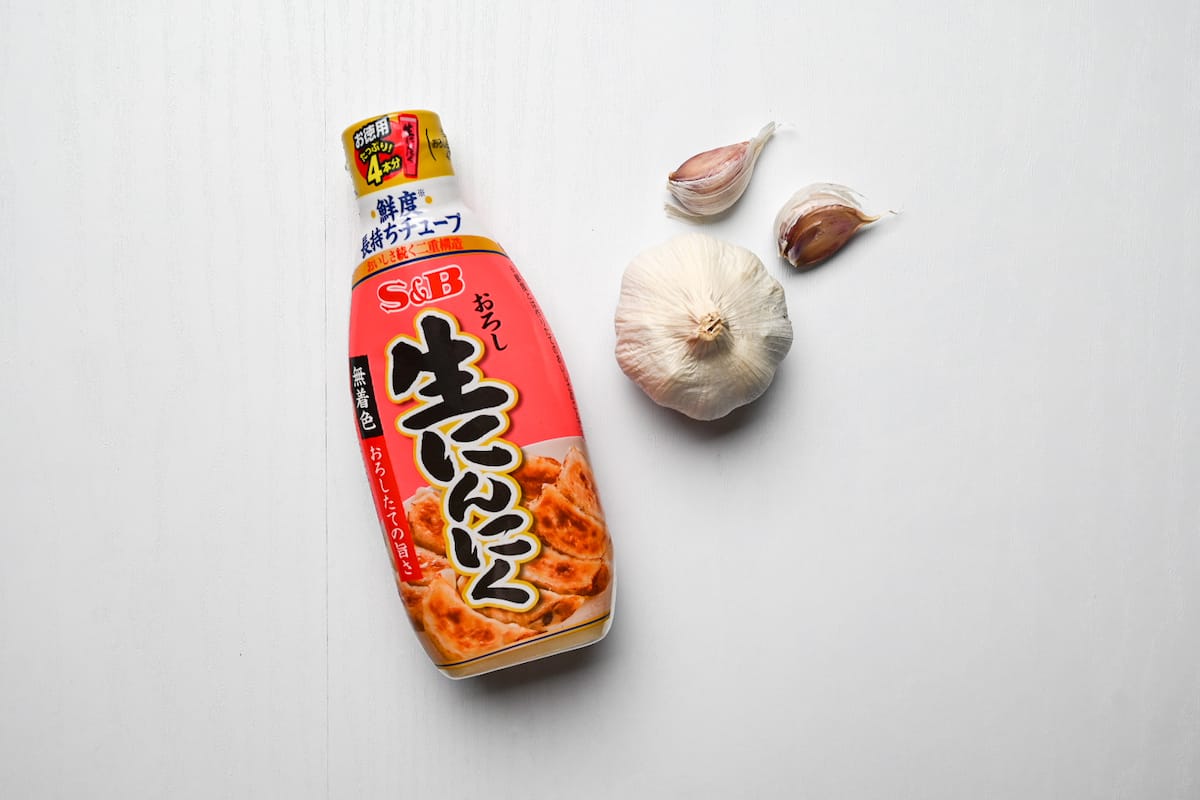
Garlic is another great flavor to add to your Japanese cooking. Similar to ginger paste, garlic paste is another convenient option for when you don’t want to spend time peeling and crushing garlic. It is a staple in Japanese homes and can be found in pretty much every supermarket in Japan.
I use S&B Oroshi Nama Ninniku (grated garlic), which can be bought here on Amazon.
Grocery List
For your convenience, here is a round-up list of all the condiments and seasonings mentioned in this post. You can use it as a reference point or grocery list for building up your Japanese pantry!
- Sugar
- Salt
- Rice vinegar
- Japanese soy sauce (dark soy sauce / koikuchi shoyu)
- Miso paste (awase miso)
- Mirin
- Sake
- Kewpie mayonnaise
- Tsuyu sauce
- Chicken buoillon powder
- Sesame oil
- Dashi
- Wasabi paste
- Japanese mustard (karashi)
- Tobanjan (Sichuan chilli paste)
- Japanese curry powder
- Japanese chilli powder (shichimi togarashi)
- Light soy sauce (usukuchi shoyu)
- Ginger paste
- Garlic paste
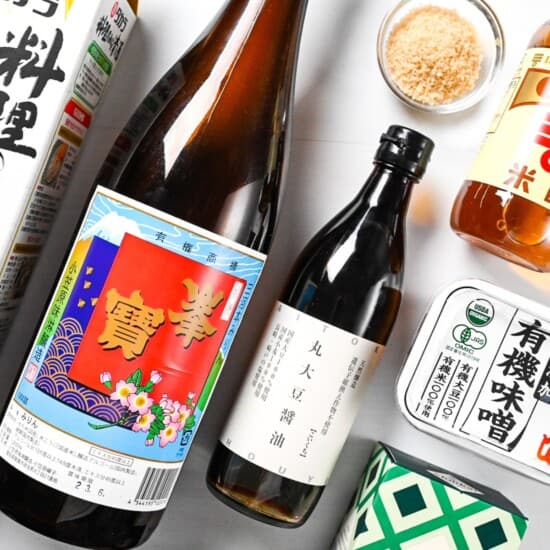
I am so I to this website and these recipes. I have really enjoyed building Japanese pantry. And my children love Japanese cuisine!!
Hi Jesse!
I’m glad you’re enjoying building your Japanese pantry, hope you and your children like the recipes!